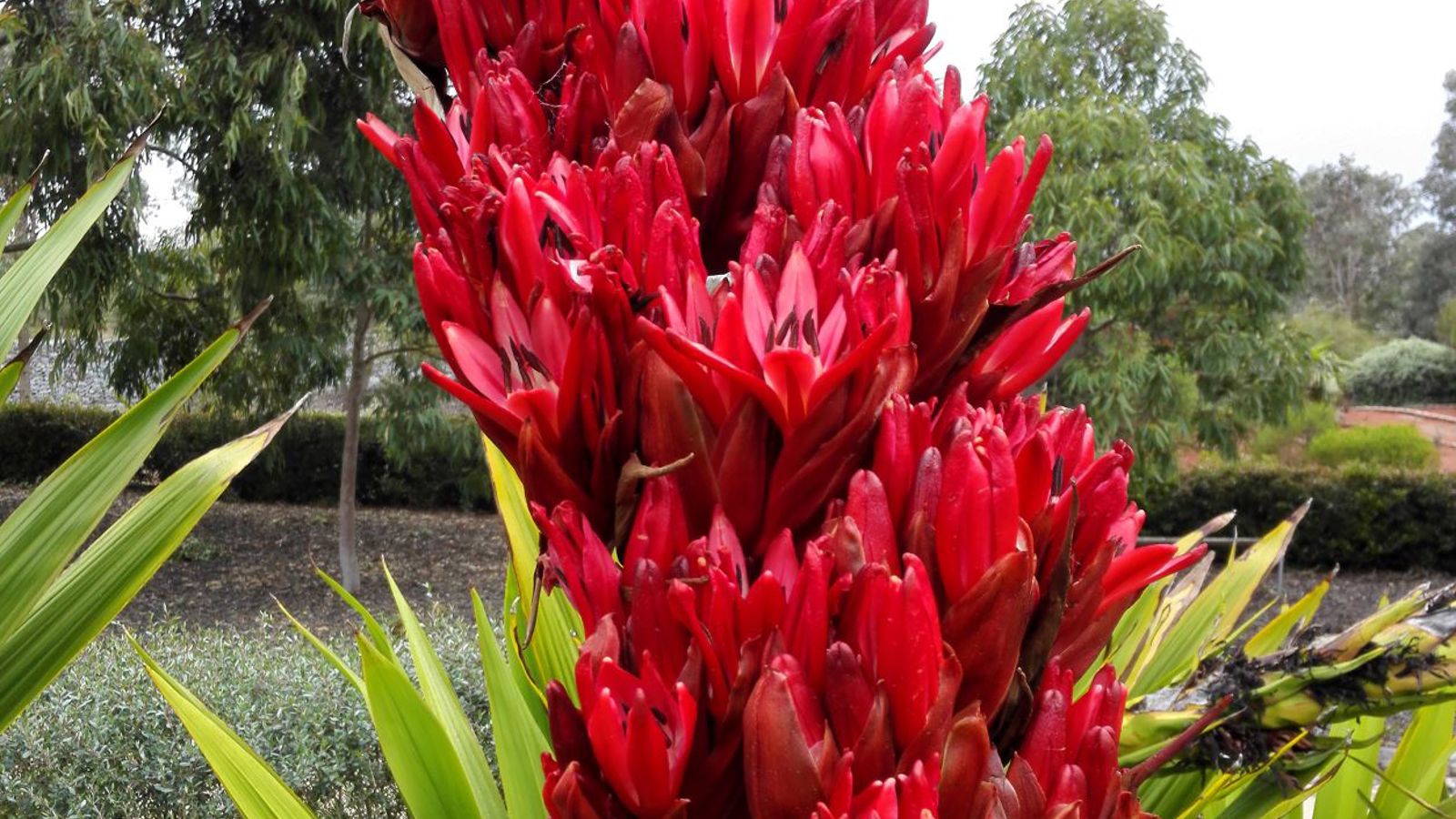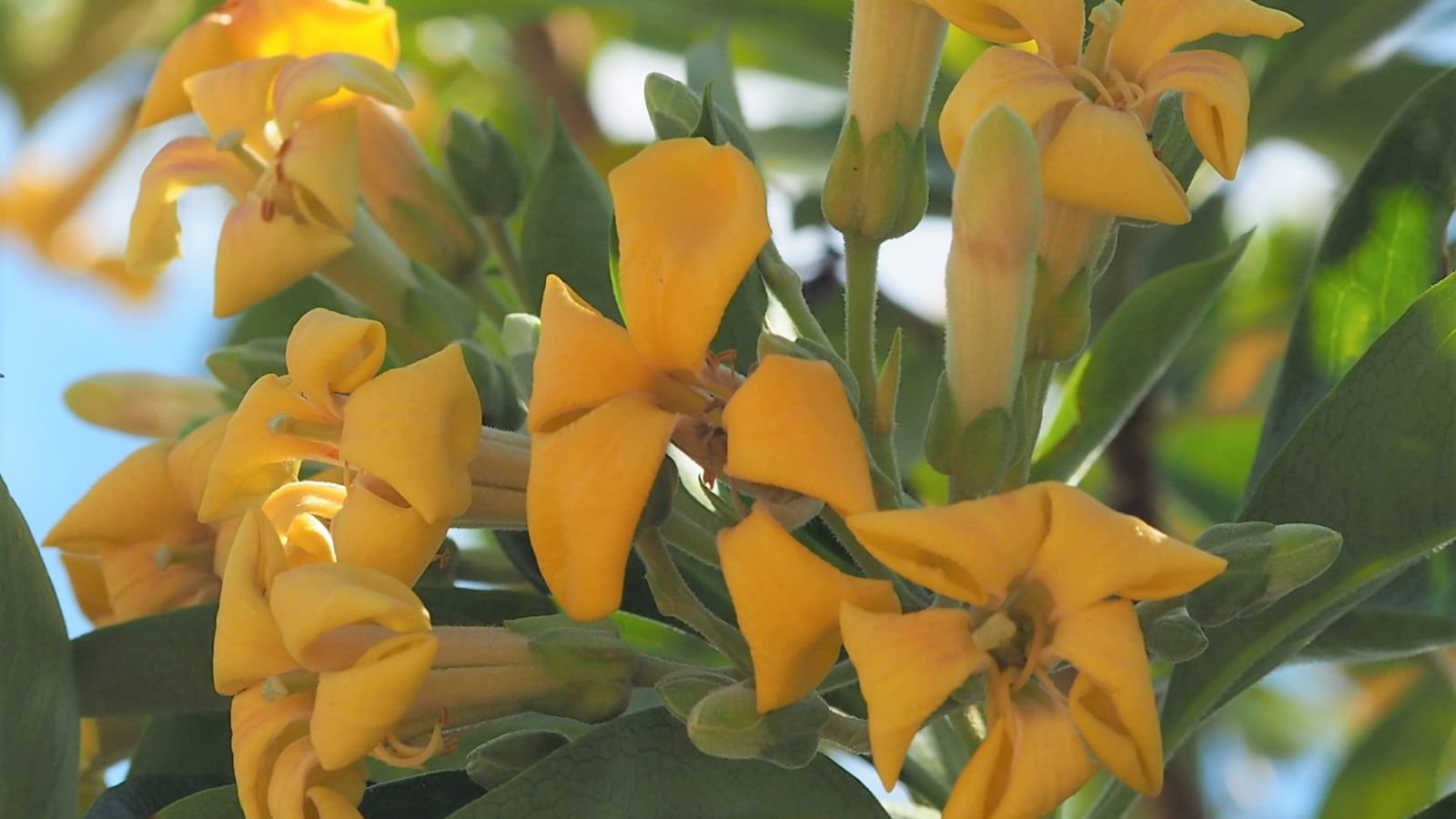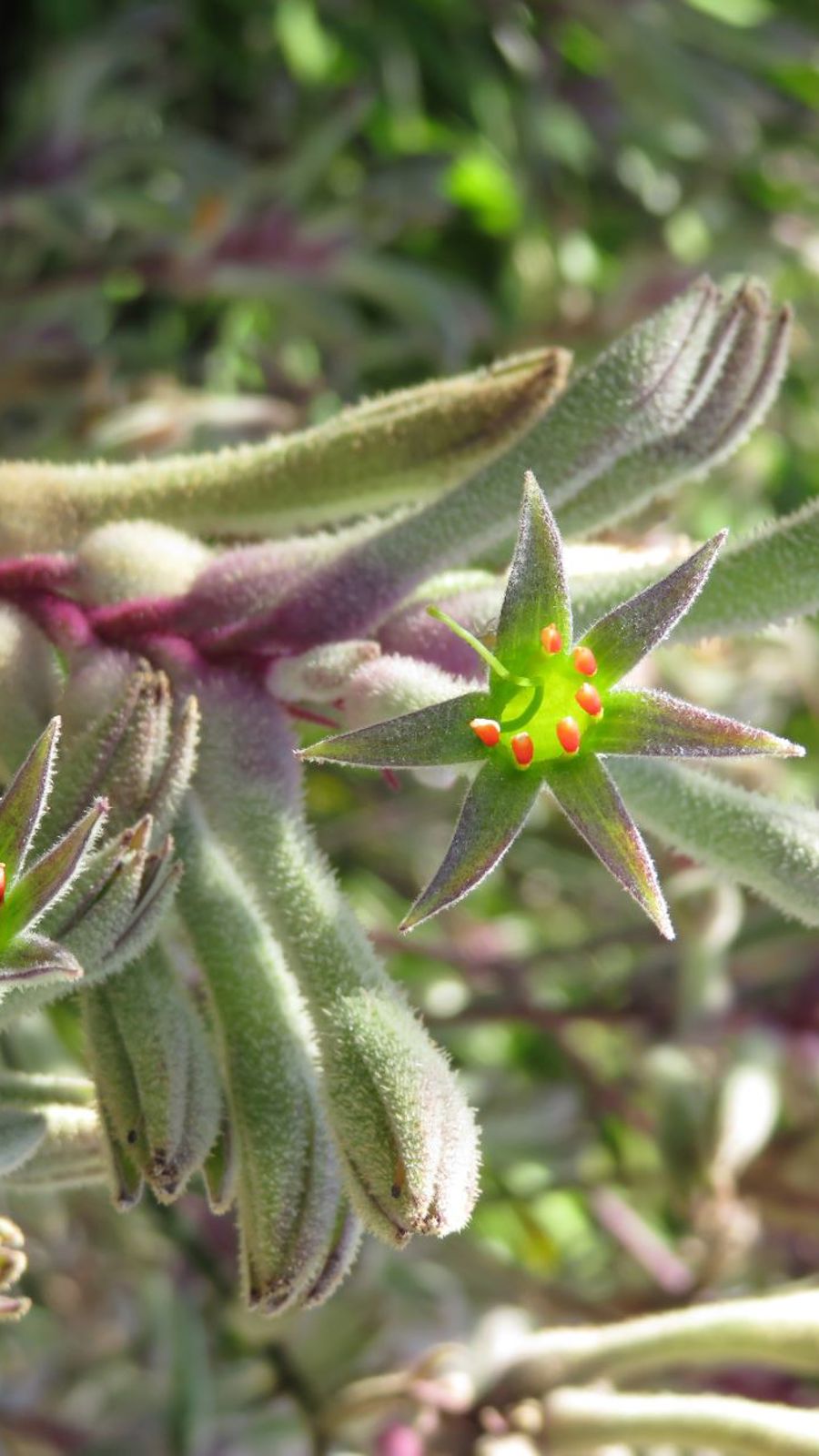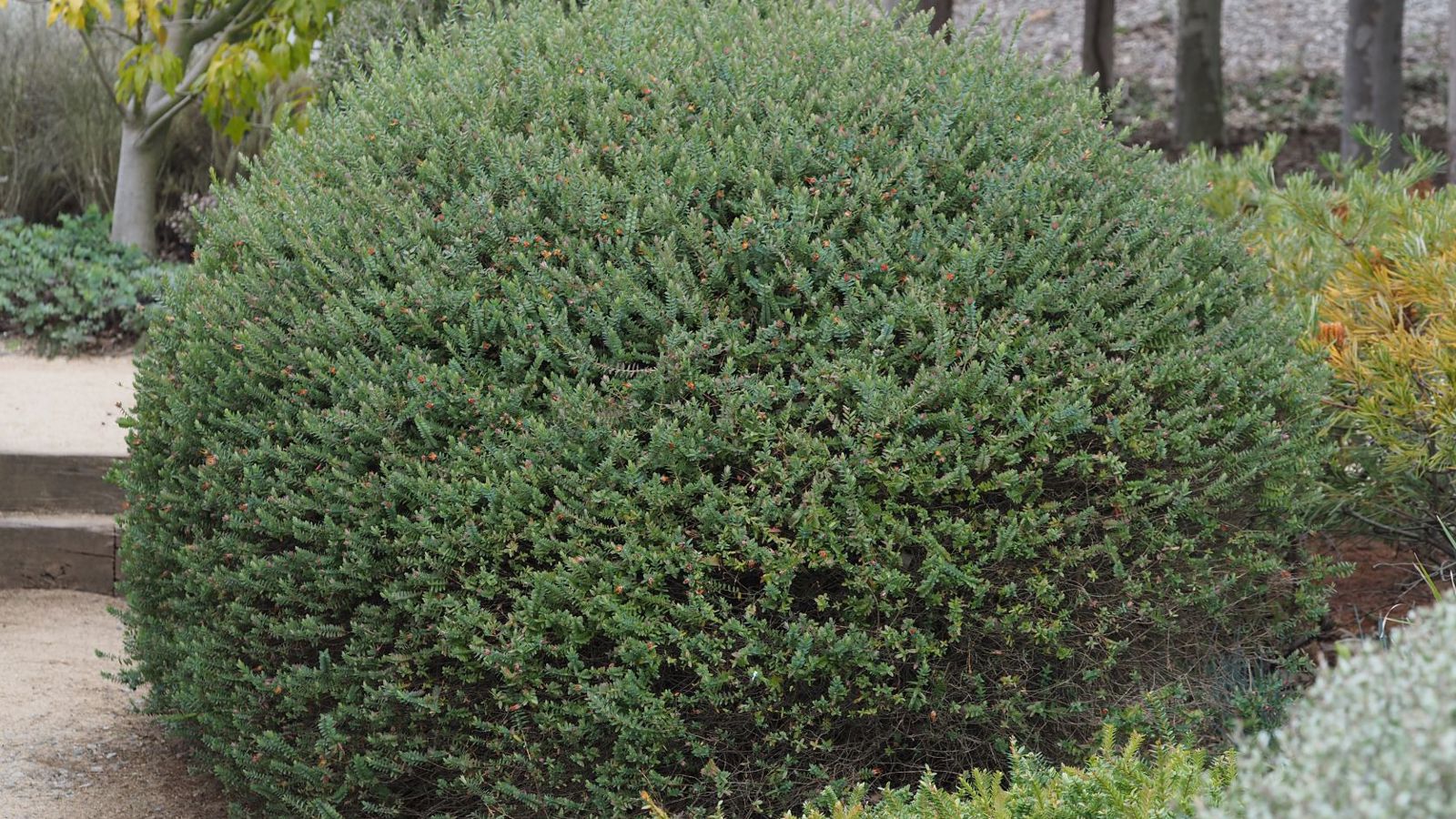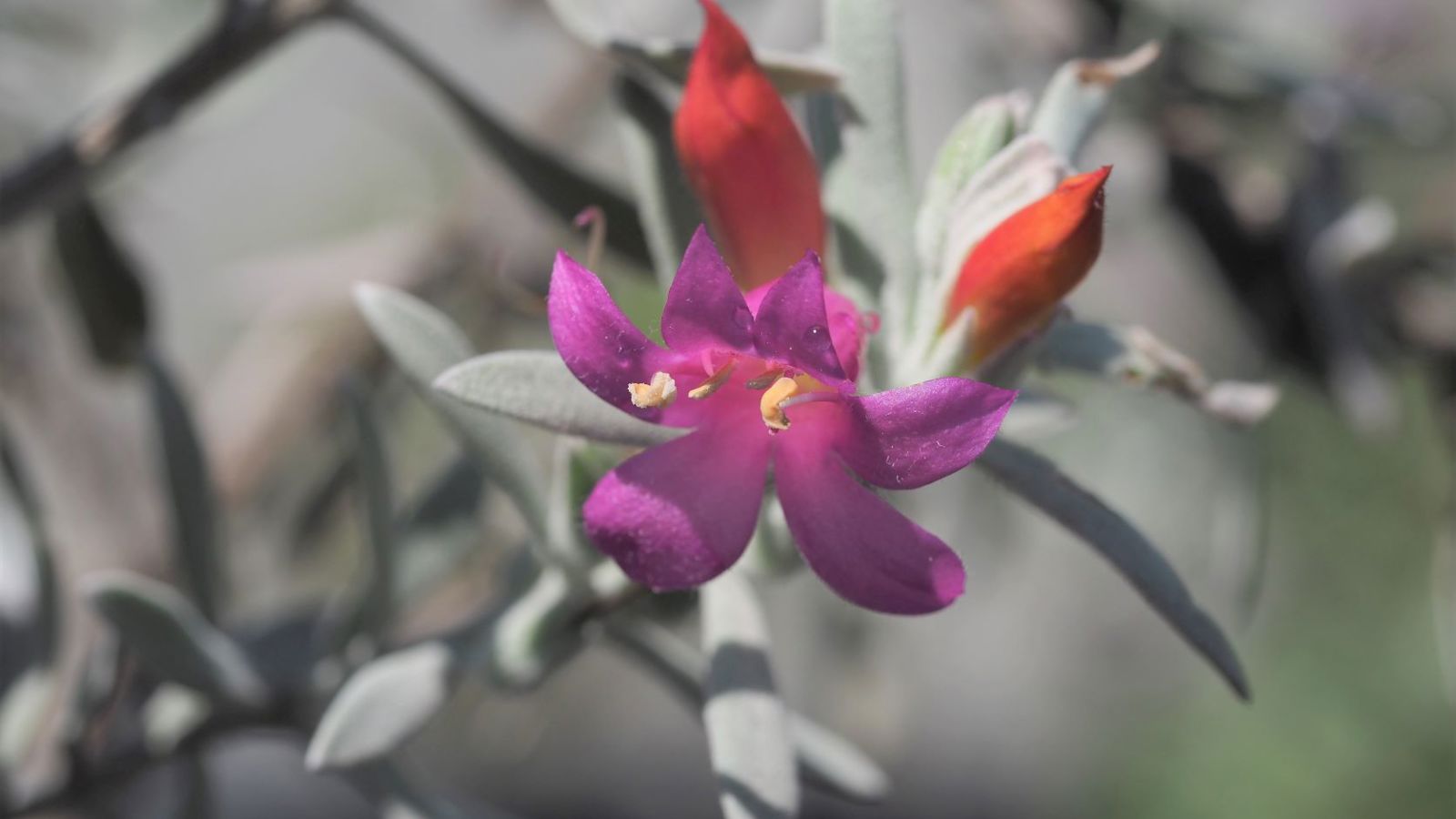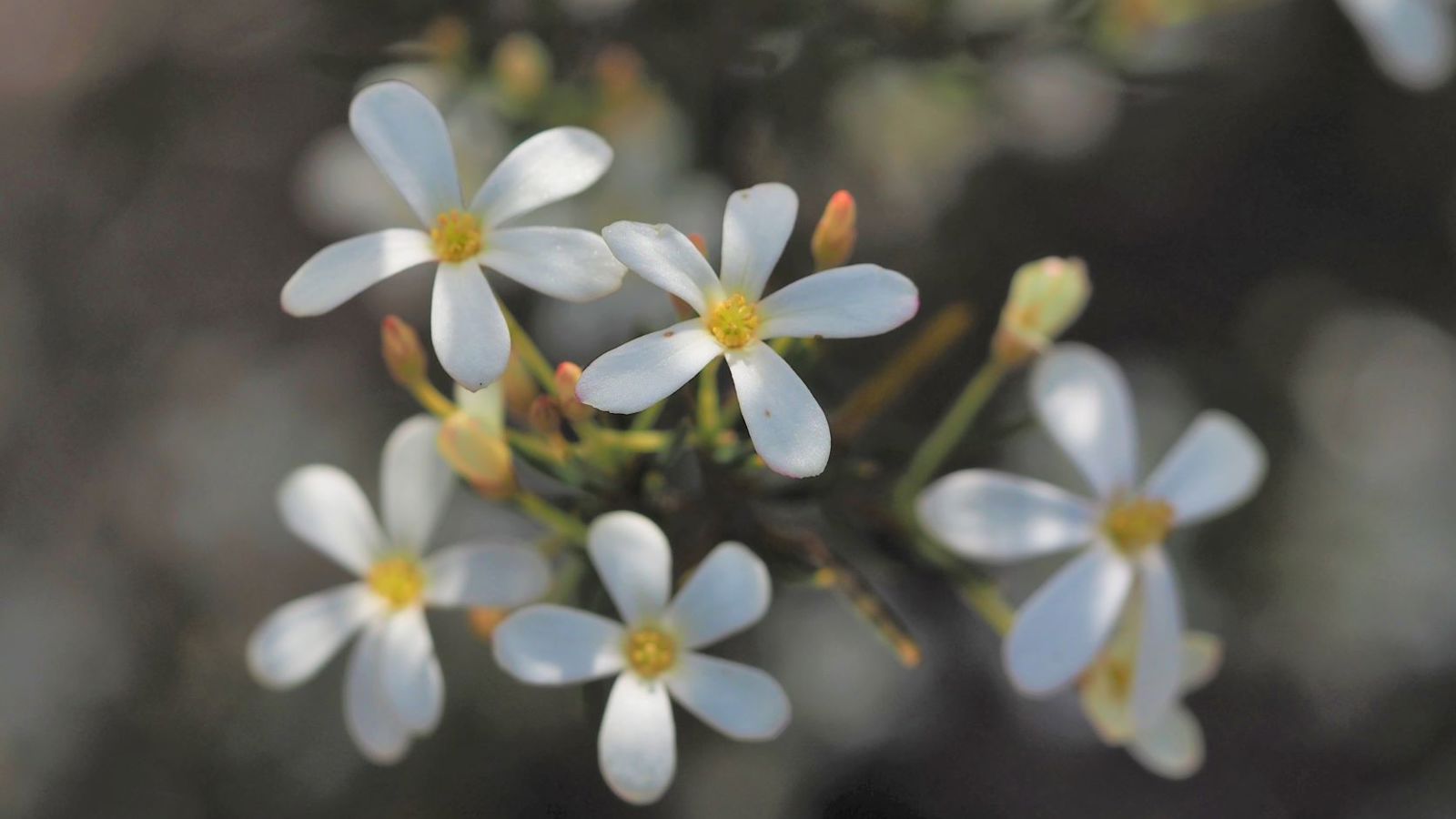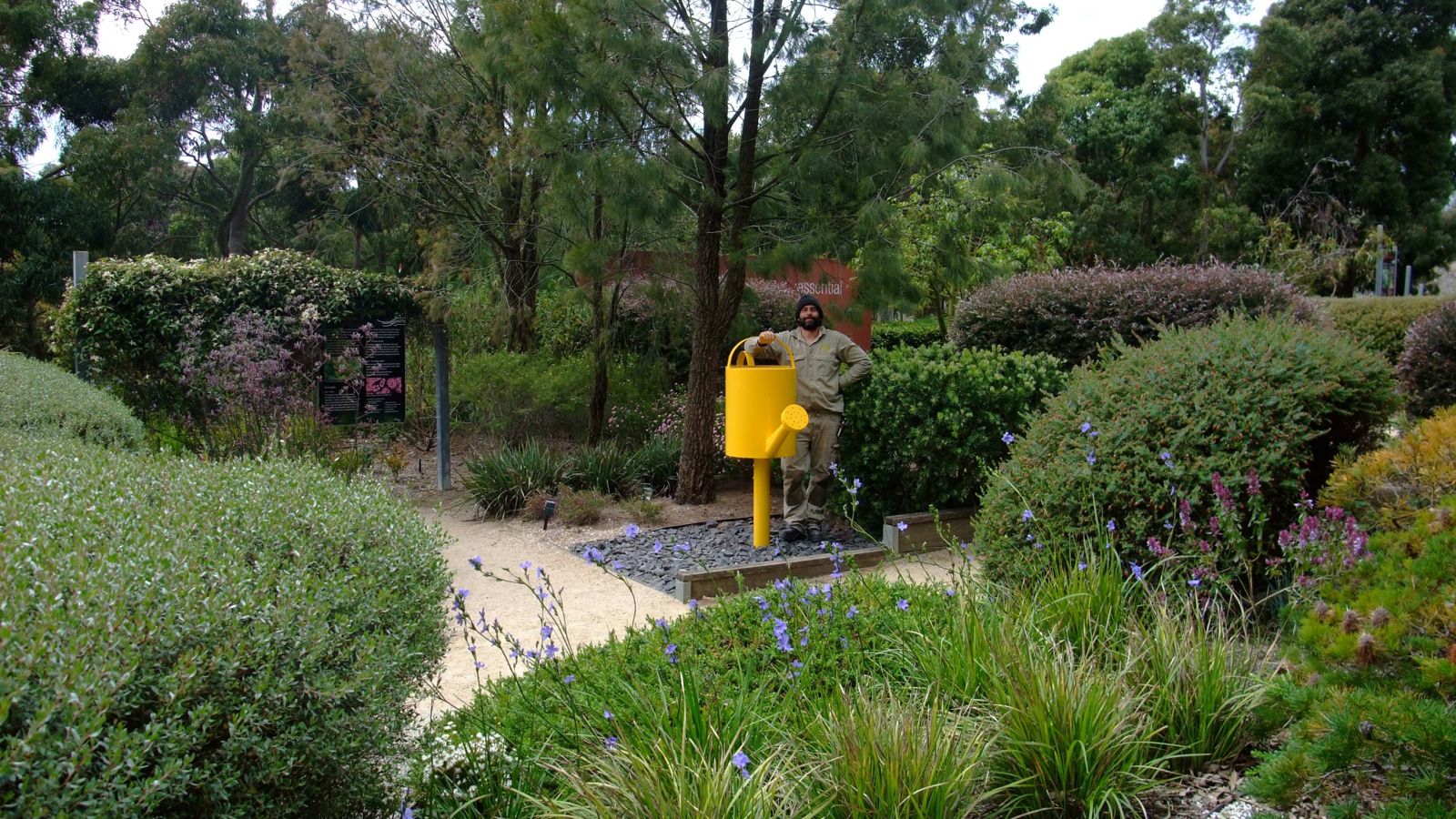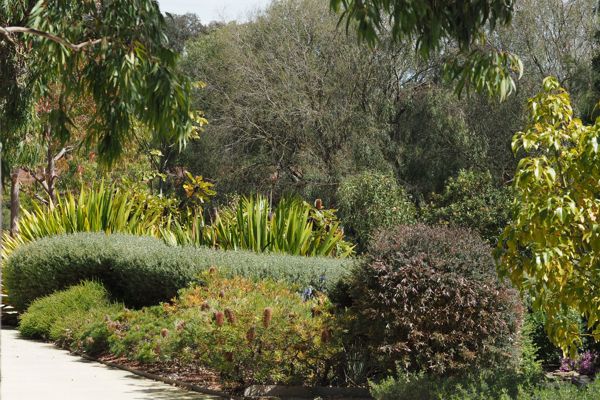
Water Saving Garden
During the Millennium Drought, this display was created to start conversations with visitors about water use to demonstrate ways to create a beautiful garden with little to no irrigation. This garden is divided into three tiers, demonstrating three different watering regimes (hydrozones); from the open and arid top terrace with no irrigation, down to the bottom terrace displaying plants with a more lush appearance that still requires very little watering.
When in the Water Saving Garden:
- See how applying different types of organic and inorganic mulches can prevent water loss and add to the aesthetics of your landscape.
- Use the topography to your advantage, grouping drought resistant plants in the highest sections of your garden, and plants with high water needs in the low-lying sections.
- All plants displayed here are readily available at retail nurseries, promoting the use of natives in home gardens.
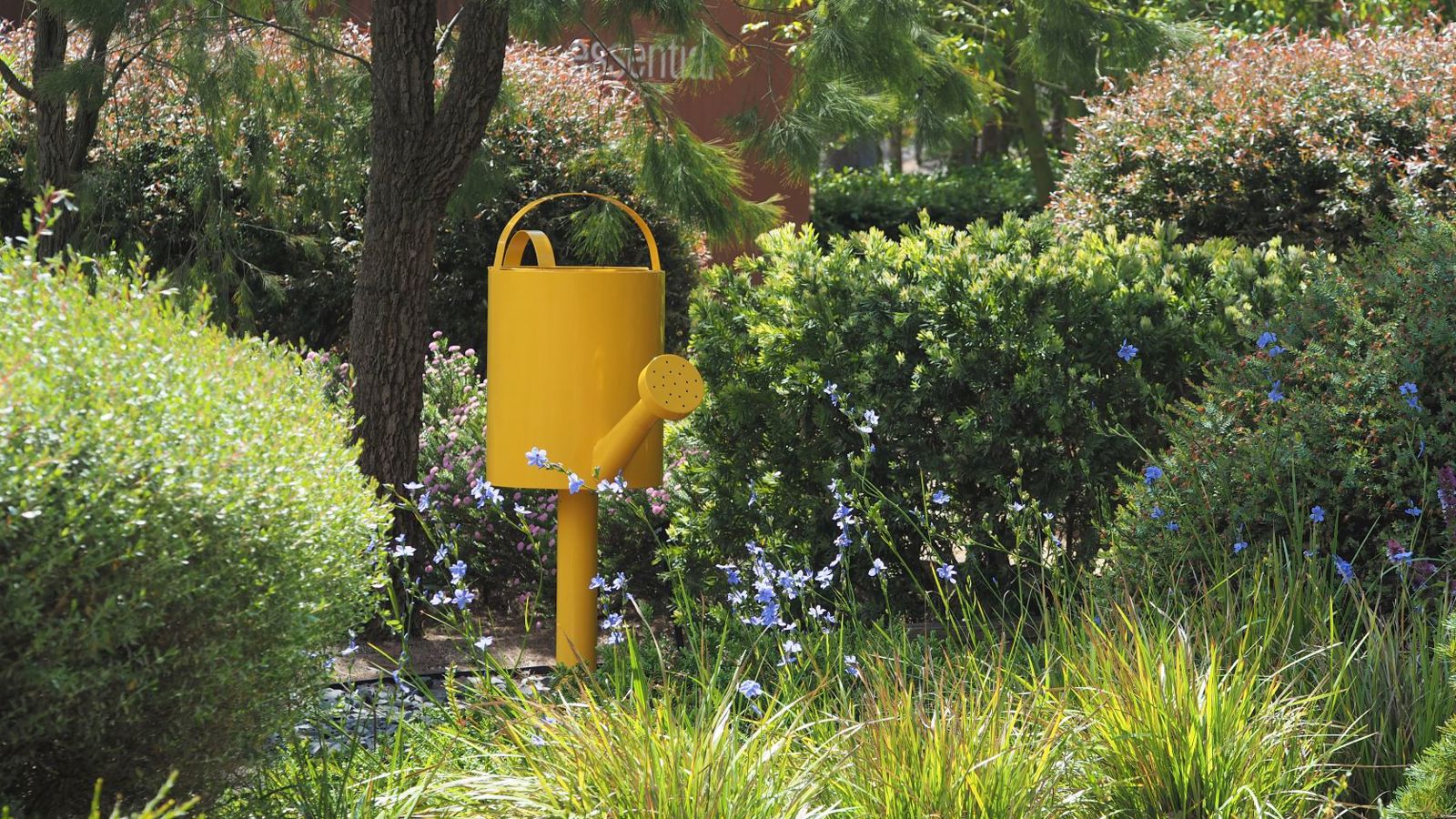
Notes from the Curator
Mathieu Lascostes
It is interesting to note that the general design style of this precinct leans towards formality; with clipped hedges, neatly shaped shrubs and well-defined geometrical beds, the hand of the gardener is strongly felt. This demonstrates once again that Australian plants should not be confined simply to naturalistic landscapes, as it was (and maybe still is) wrongly assumed. Indeed, one can easily select a perfectly appropriate native plant to create any particular form of garden, from French Parterre to Japanese Tea Garden. Why not! There is after all around 22,000 different species to choose from!

